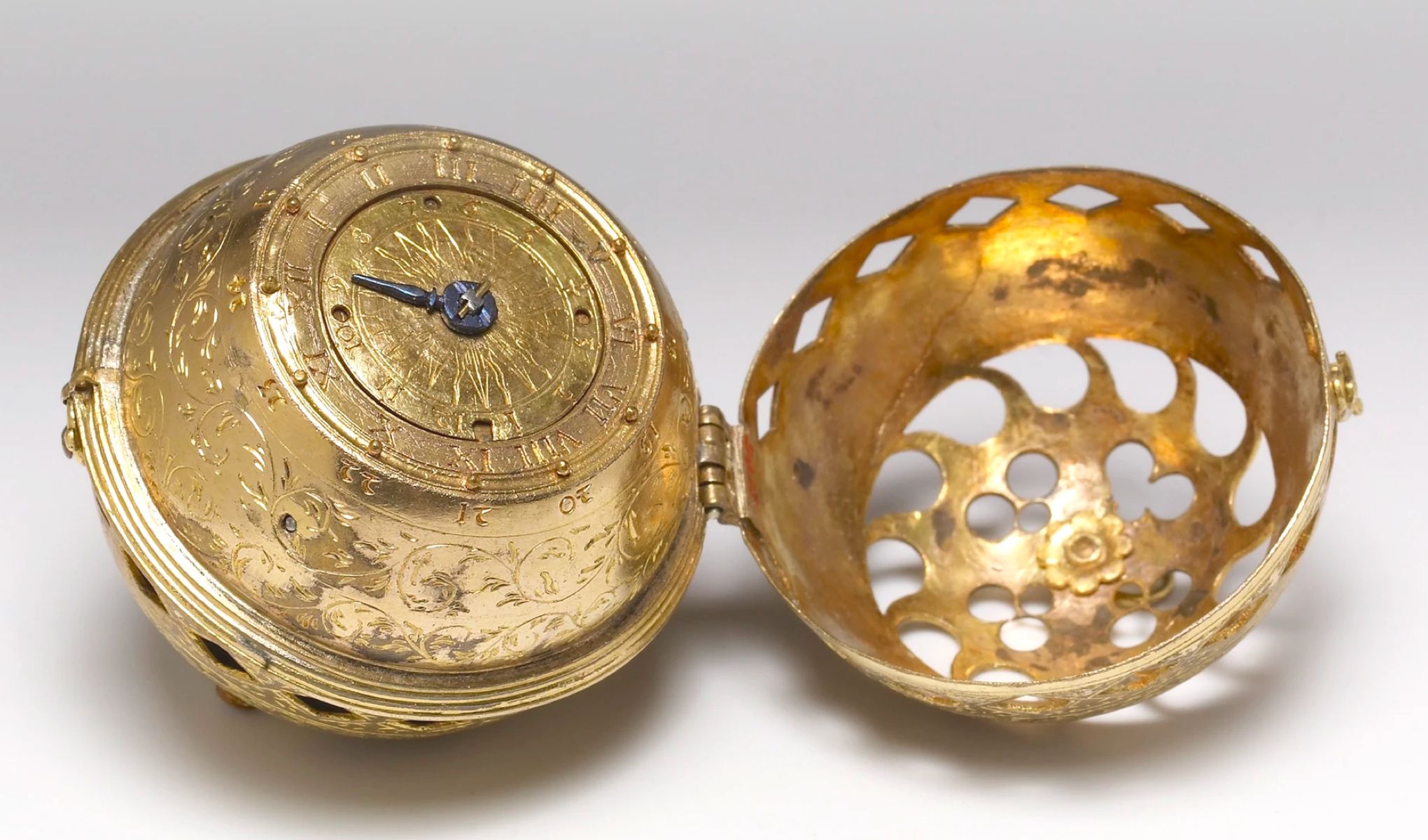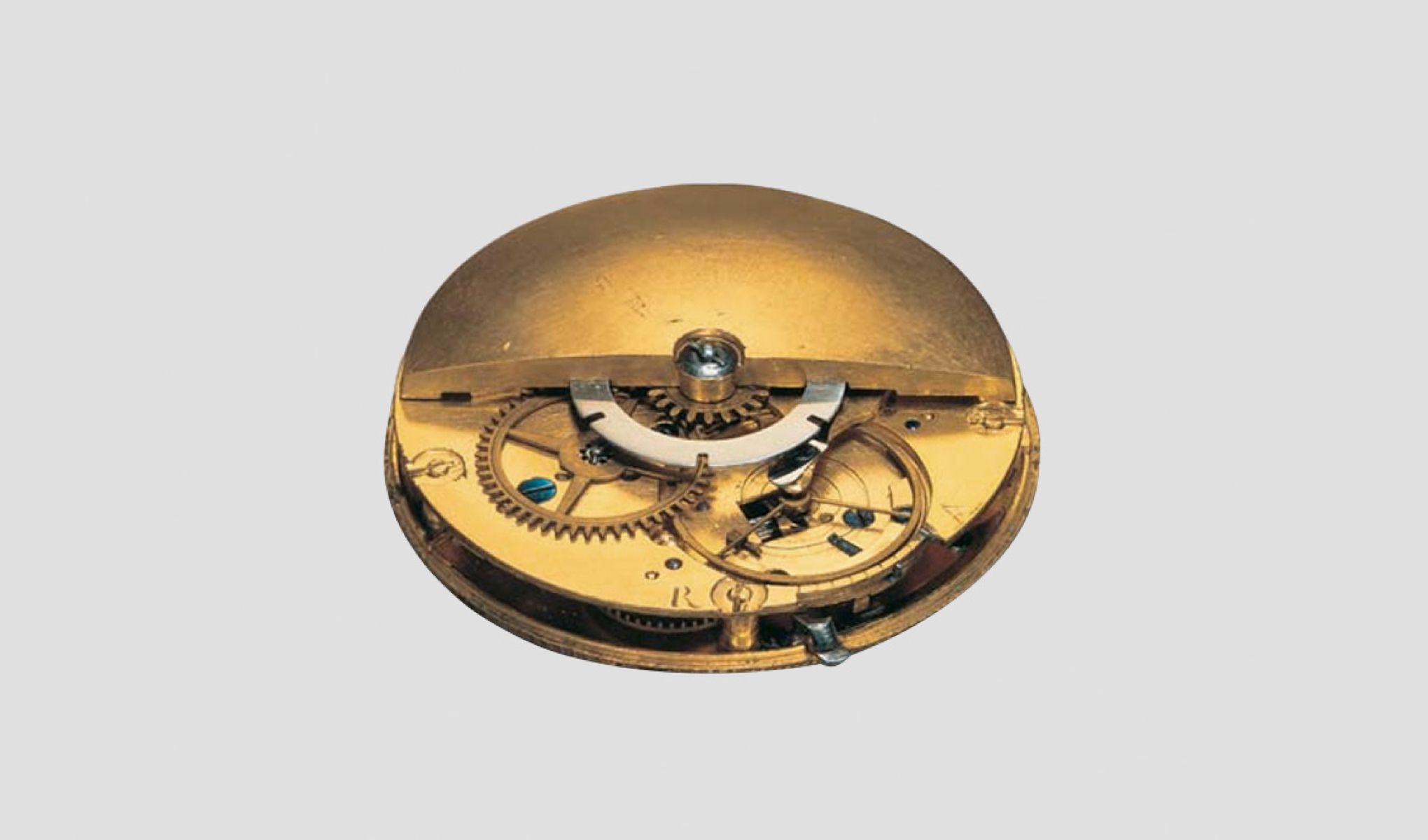STORIES
STORIES

Mechanical Watch vs. Automatic Watch - What's The Difference?
Looking for the differences between mechanical watches and automatic watches? Learn which watch movement type is right for you.
January 2024
1. What Is A Mechanical Watch?
1. What Is A Mechanical Watch?
Mechanical watches are powered with daily manual winding.
Mechanical watches are powered with daily manual winding.
Watches are defined by the movement inside powering the watch. Similar to car engines, watch movements determine the functionality and quality of the timepiece. There are three types of watch movements: Mechanical, Automatic, and Quartz.
Mechanical watches are among the oldest of the three movement types. Also known as manual watches or analog watches, mechanical watch movements keep accurate time with manual winding. Invented in 1510 by German clockmaker Peter Heinlein, the first portable watch was about 6cm in diameter (worn around the neck or fastened to belts) and ran reliably for only several hours.
Mechanical watches are among the oldest of the three movement types. Also known as manual watches or analog watches, mechanical watch movements keep accurate time with manual winding. Invented in 1510 by German clockmaker Peter Heinlein, the first portable watch was about 6cm in diameter (worn around the neck or fastened to belts) and ran reliably for only several hours.
Watches are defined by the movement inside powering the watch. Similar to car engines, watch movements determine the functionality and quality of the timepiece. There are three types of watch movements: Mechanical, Automatic, and Quartz.
Mechanical watches are among the oldest of the three movement types. Also known as manual watches or analog watches, mechanical watch movements keep accurate time with manual winding. Invented in 1510 by German clockmaker Peter Heinlein, the first portable watch was about 6cm in diameter (worn around the neck or fastened to belts) and ran reliably for only several hours.
Mechanical watches are among the oldest of the three movement types. Also known as manual watches or analog watches, mechanical watch movements keep accurate time with manual winding. Invented in 1510 by German clockmaker Peter Heinlein, the first portable watch was about 6cm in diameter (worn around the neck or fastened to belts) and ran reliably for only several hours.
2. What Are Mechanical Watch Movements?
2. What Are Mechanical Watch Movements?
Mechanical watch movements feature an advanced mechanism that transforms the energy from manual winding the crown to power the watch.
The crown charges the mainspring inside the watch movement, an ultra thin metal strip that is coiled to store mechanical energy. As the mainspring uncoils, it turns a series of gears at the exact rate to move the seconds hand forward to tell time.
This is why mechanical watches need to be wound every day for precise timekeeping. When fully wound, a mechanical watch can tell accurate time for the length of the power reserve. The duration is dictated by the time it takes for the mainspring inside the movement to unwind after it has been fully wound. Modern mechanical watches typically have a power reserve for 36-48 hours before manual winding is required again.
The crown charges the mainspring inside the watch movement, an ultra thin metal strip that is coiled to store mechanical energy. As the mainspring uncoils, it turns a series of gears at the exact rate to move the seconds hand forward to tell time.
This is why mechanical watches need to be wound every day for precise timekeeping. When fully wound, a mechanical watch can tell accurate time for the length of the power reserve. The duration is dictated by the time it takes for the mainspring inside the movement to unwind after it has been fully wound. Modern mechanical watches typically have a power reserve for 36-48 hours before manual winding is required again.
Mechanical watch movements feature an advanced mechanism that transforms the energy from manual winding the crown to power the watch.
The crown charges the mainspring inside the watch movement, an ultra thin metal strip that is coiled to store mechanical energy. As the mainspring uncoils, it turns a series of gears at the exact rate to move the seconds hand forward to tell time.
This is why mechanical watches need to be wound every day for precise timekeeping. When fully wound, a mechanical watch can tell accurate time for the length of the power reserve. The duration is dictated by the time it takes for the mainspring inside the movement to unwind after it has been fully wound. Modern mechanical watches typically have a power reserve for 36-48 hours before manual winding is required again.
The crown charges the mainspring inside the watch movement, an ultra thin metal strip that is coiled to store mechanical energy. As the mainspring uncoils, it turns a series of gears at the exact rate to move the seconds hand forward to tell time.
This is why mechanical watches need to be wound every day for precise timekeeping. When fully wound, a mechanical watch can tell accurate time for the length of the power reserve. The duration is dictated by the time it takes for the mainspring inside the movement to unwind after it has been fully wound. Modern mechanical watches typically have a power reserve for 36-48 hours before manual winding is required again.
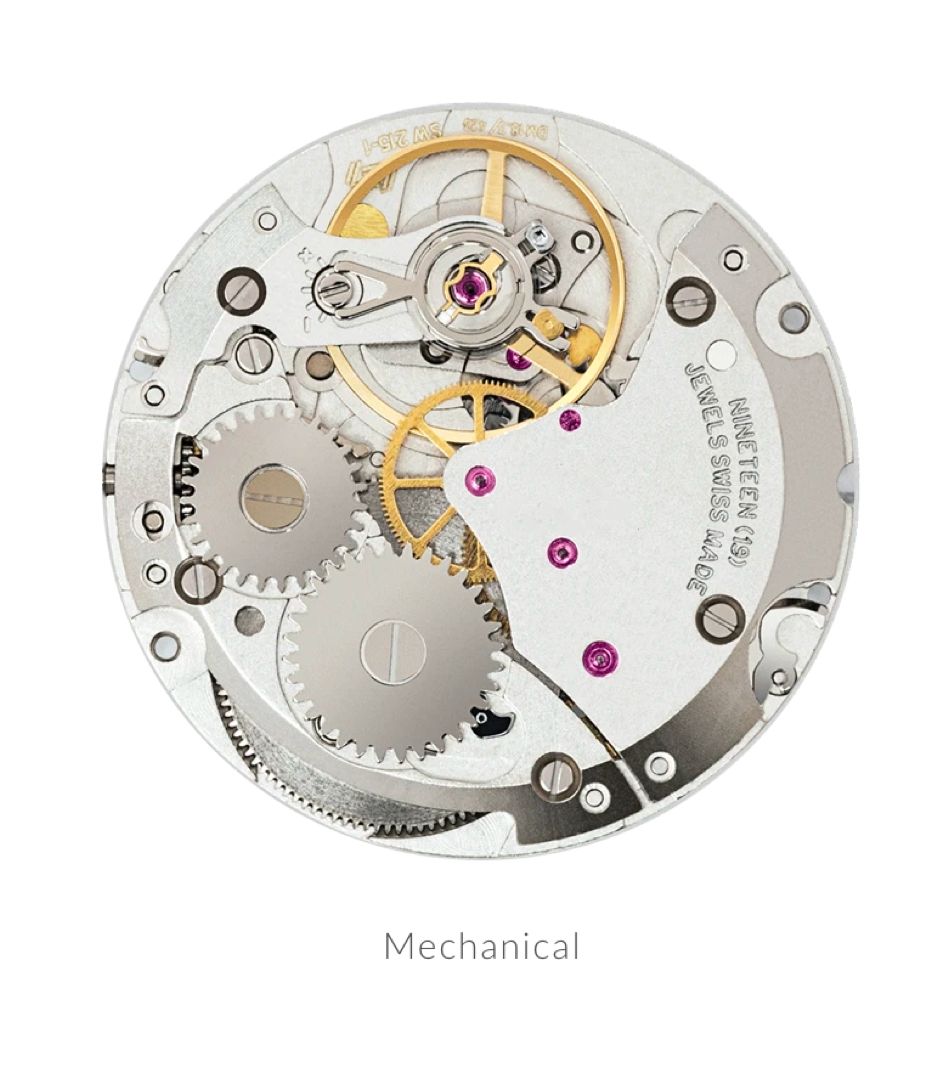

3. Top Picks For Mechanical Watches
3. Top Picks For Mechanical Watches
Bulgari Octo Finissimo Skeleton
The Bulgari Octo Finissimo Skeleton by legendary designer Gérald Genta has an iconic octagonal shape and an impressive 8-day power reserve. Its super sleek profile at just 5.95mm is made possible by its ultra-thin manual winding movement. The intricate skeleton dial with titanium case and bracelet gives it a contemporary and monochromatic look for those looking to splurge.
Bulgari Octo Finissimo Skeleton
The Bulgari Octo Finissimo Skeleton by legendary designer Gérald Genta has an iconic octagonal shape and an impressive 8-day power reserve. Its super sleek profile at just 5.95mm is made possible by its ultra-thin manual winding movement. The intricate skeleton dial with titanium case and bracelet gives it a contemporary and monochromatic look for those looking to splurge.
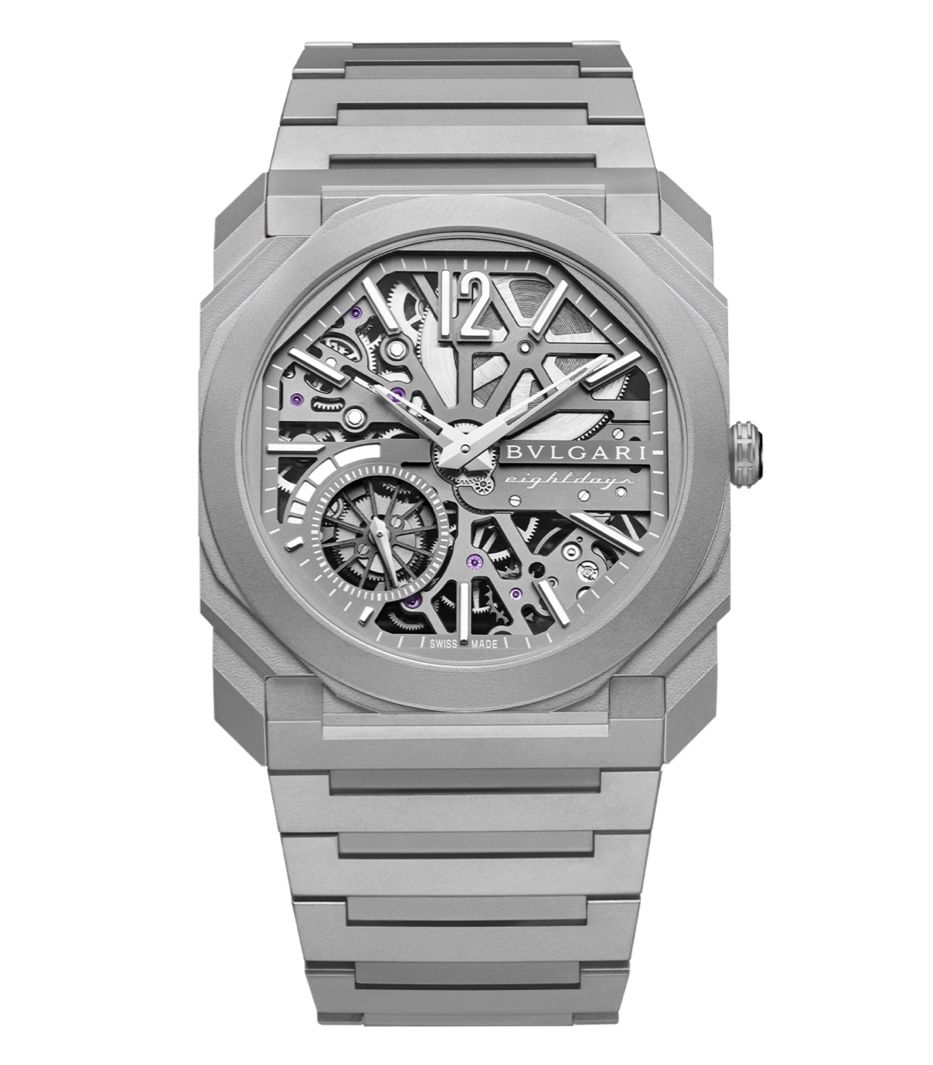
Model: Bulgari Octo Finissimo Skeleton
Case Size: 41 x 41 x 5.15mm
Movement: Manual winding Calibre BVL 199 SK with 8 days power reserve
Price: $26,300 USD
Case Size: 41 x 41 x 5.15mm
Movement: Manual winding Calibre BVL 199 SK with 8 days power reserve
Price: $26,300 USD

Model: Bulgari Octo Finissimo Skeleton
Case Size: 41 x 41 x 5.15mm
Movement: Manual winding Calibre BVL 199 SK with 8 days power reserve
Price: $26,300 USD
Case Size: 41 x 41 x 5.15mm
Movement: Manual winding Calibre BVL 199 SK with 8 days power reserve
Price: $26,300 USD
Omega Speedmaster Moonwatch Professional
This famous Omega timepiece is special in that it was the first watch on the moon, and has since been part of all six moon landings. The legendary chronograph is driven by the Calibre 3861, which powers the small seconds sub-dial, 30-minute recorder and 12-hour recorder, along with the central chronograph function. The stainless steel mechanical watch features an asymmetrical 42mm case with a 48 hour power reserve.
Omega Speedmaster Moonwatch Professional
This famous Omega timepiece is special in that it was the first watch on the moon, and has since been part of all six moon landings. The legendary chronograph is driven by the Calibre 3861, which powers the small seconds sub-dial, 30-minute recorder and 12-hour recorder, along with the central chronograph function. The stainless steel mechanical watch features an asymmetrical 42mm case with a 48 hour power reserve.
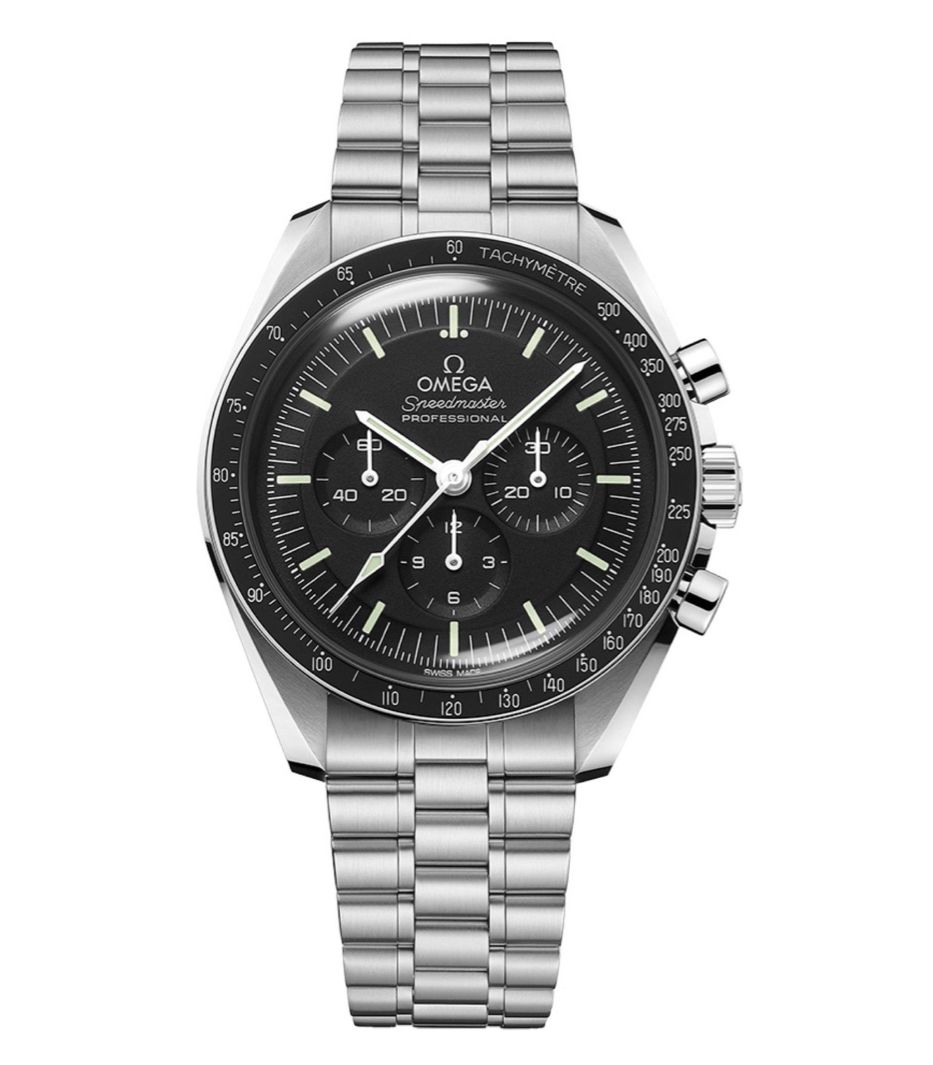
Model: Omega Speedmaster Moonwatch Professional
Case Size: 42 x 48.2 x 13.5mm
Movement: Manual winding Chronograph Caliber 3861 with 48 hour power reserve
Price: $7,700 USD
Case Size: 42 x 48.2 x 13.5mm
Movement: Manual winding Chronograph Caliber 3861 with 48 hour power reserve
Price: $7,700 USD

Model: Omega Speedmaster Moonwatch Professional
Case Size: 42 x 48.2 x 13.5mm
Movement: Manual winding Chronograph Caliber 3861 with 48 hour power reserve
Price: $7,700 USD
Case Size: 42 x 48.2 x 13.5mm
Movement: Manual winding Chronograph Caliber 3861 with 48 hour power reserve
Price: $7,700 USD
4. What Is An Automatic Watch?
4. What Is An Automatic Watch?
Automatic watches are powered with daily wear to tell time without a battery.
Automatic watches are powered with daily wear to tell time without a battery.
Automatic watches are among the most advanced of the three movement types. Also known as self-winding watches, automatic watches can keep accurate time with daily wear. They are a type of mechanical watch that features an additional rotor on the back of the movement to power the watch.
The first automatic watch was created in 1776 by Swiss horologist Abraham Louis Perrelet. It features a primitive rotor to power the pocket watch for up to 8 hours, but only became popularized after WWII with the rise of the wristwatch. Over time, the self-winding watch movement has been refined in size and accuracy over generations of watchmaking.
The first automatic watch was created in 1776 by Swiss horologist Abraham Louis Perrelet. It features a primitive rotor to power the pocket watch for up to 8 hours, but only became popularized after WWII with the rise of the wristwatch. Over time, the self-winding watch movement has been refined in size and accuracy over generations of watchmaking.
Automatic watches are among the most advanced of the three movement types. Also known as self-winding watches, automatic watches can keep accurate time with daily wear. They are a type of mechanical watch that features an additional rotor on the back of the movement to power the watch.
The first automatic watch was created in 1776 by Swiss horologist Abraham Louis Perrelet. It features a primitive rotor to power the pocket watch for up to 8 hours, but only became popularized after WWII with the rise of the wristwatch. Over time, the self-winding watch movement has been refined in size and accuracy over generations of watchmaking.
The first automatic watch was created in 1776 by Swiss horologist Abraham Louis Perrelet. It features a primitive rotor to power the pocket watch for up to 8 hours, but only became popularized after WWII with the rise of the wristwatch. Over time, the self-winding watch movement has been refined in size and accuracy over generations of watchmaking.
5. What Are Automatic Watch Movements?
5. What Are Automatic Watch Movements?
Automatic watch movements harness the energy from the motion of the wearer's wrist to power the watch. The rotor, a semi-circular weighted disc on the back of the movement, swings back and forth to wind the movement. (Learn How Automatic Watches Work)
When worn every day, an automatic watch can tell time without the need for manual winding. We recommend Swiss automatic watch movements, which are highly reliable and can be serviced over time to last decades.
When worn every day, an automatic watch can tell time without the need for manual winding. We recommend Swiss automatic watch movements, which are highly reliable and can be serviced over time to last decades.
Automatic watch movements harness the energy from the motion of the wearer's wrist to power the watch. The rotor, a semi-circular weighted disc on the back of the movement, swings back and forth to wind the movement. (Learn How Automatic Watches Work)
When worn every day, an automatic watch can tell time without the need for manual winding. We recommend Swiss automatic watch movements, which are highly reliable and can be serviced over time to last decades.
When worn every day, an automatic watch can tell time without the need for manual winding. We recommend Swiss automatic watch movements, which are highly reliable and can be serviced over time to last decades.
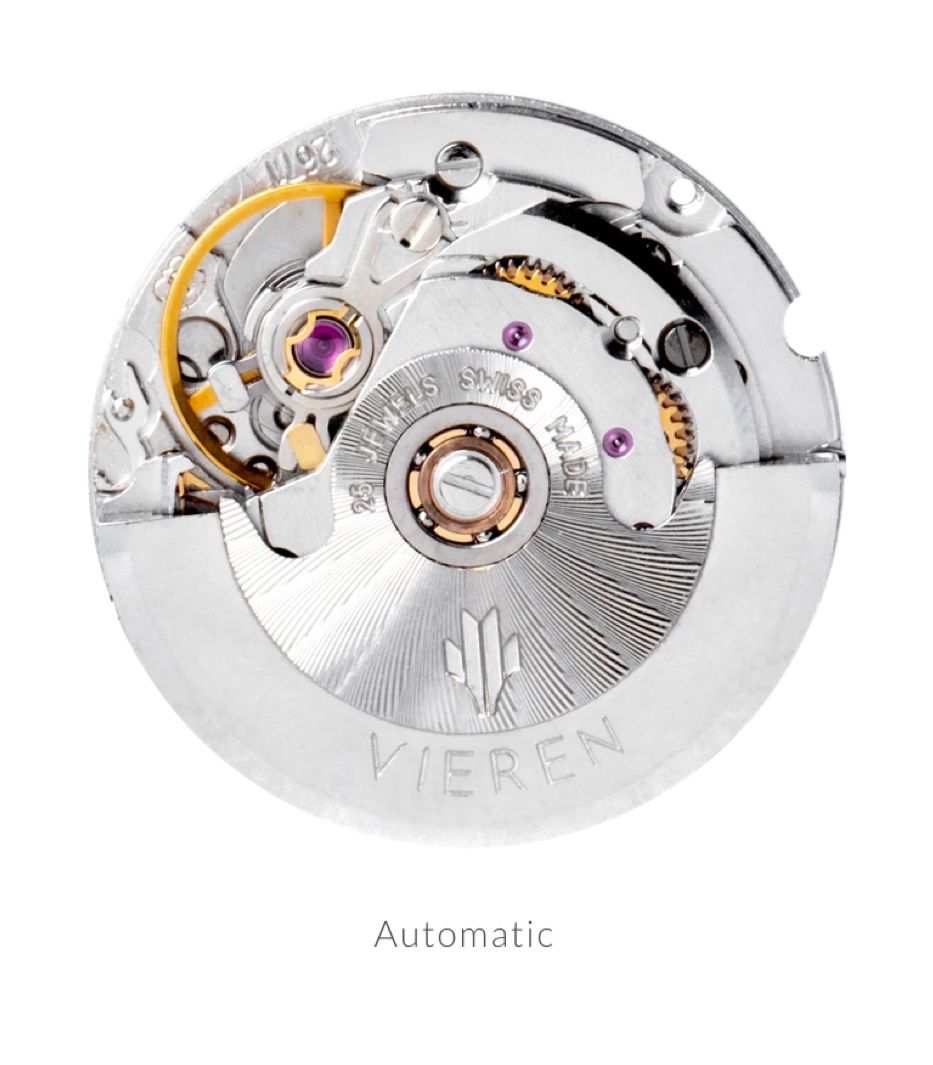

6. Top Picks For Automatic Watches
6. Top Picks For Automatic Watches
Patek Philippe Nautilus
One of the most revered watchmakers of all time, Patek Phillipe watches offer timeless designs and undeniable quality. The Nautilus is a classic 1970s sports watch design that will likely never go out of style. The geometrically shaped case and striped dial are instantly recognizable. The white gold case and bracelet, sapphire crystal, and automatic movement with 100 meters of water resistance make the Nautilus a giant among watches.
Patek Philippe Nautilus
One of the most revered watchmakers of all time, Patek Phillipe watches offer timeless designs and undeniable quality. The Nautilus is a classic 1970s sports watch design that will likely never go out of style. The geometrically shaped case and striped dial are instantly recognizable. The white gold case and bracelet, sapphire crystal, and automatic movement with 100 meters of water resistance make the Nautilus a giant among watches.
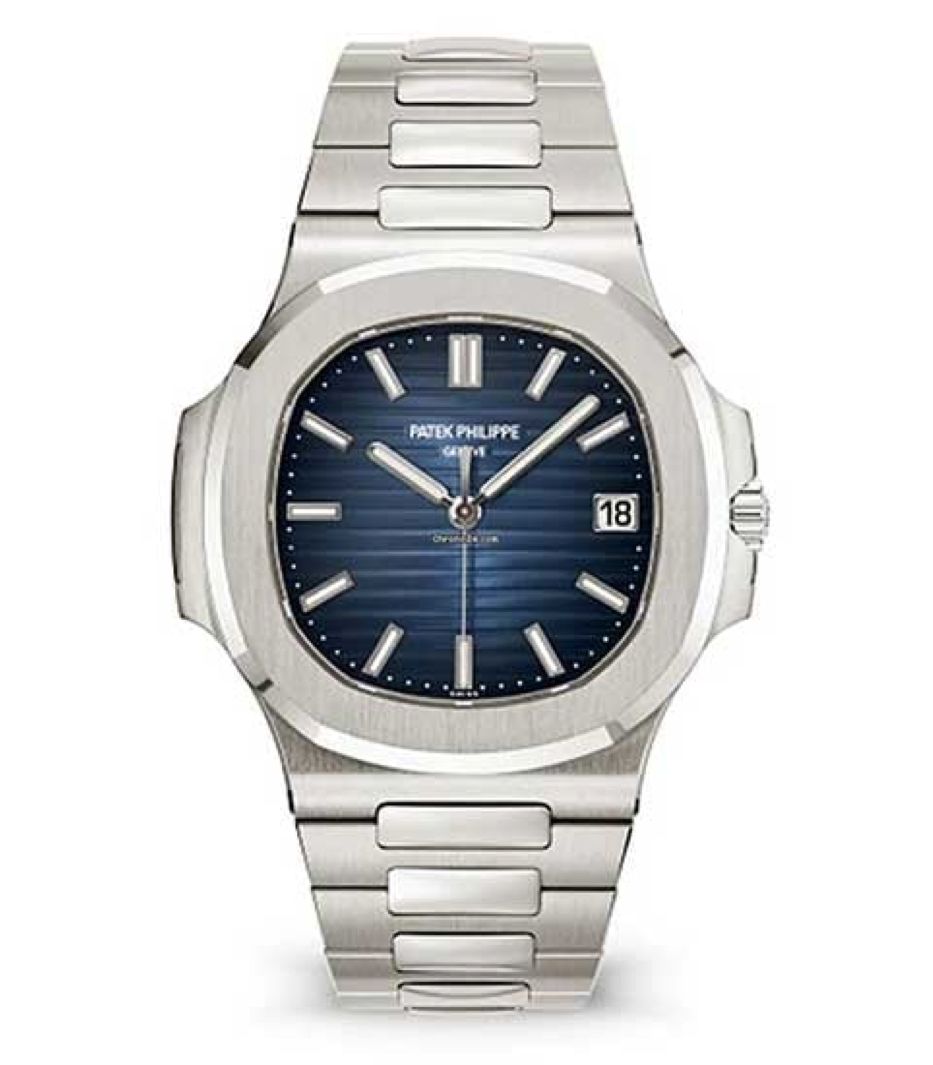
Model: Patek Philippe Nautilus
Case Size: 37.5 x 41.7 x 7.7mm
Movement: Self winding Caliber 26-330 S C automatic with 45 hour power reserve
Price: $34,800 USD
Case Size: 37.5 x 41.7 x 7.7mm
Movement: Self winding Caliber 26-330 S C automatic with 45 hour power reserve
Price: $34,800 USD

Model: Patek Philippe Nautilus
Case Size: 37.5 x 41.7 x 7.7mm
Movement: Self winding Caliber 26-330 S C automatic with 45 hour power reserve
Price: $34,800 USD
Case Size: 37.5 x 41.7 x 7.7mm
Movement: Self winding Caliber 26-330 S C automatic with 45 hour power reserve
Price: $34,800 USD
VIEREN Steel Stereo Diamond
A new Swiss luxury watch microbrand, VIEREN is reinventing the modern rectangular watch for today's generation. Their latest Stereo Collection blends Studio 54 nightlife and vintage style to add glamour to any occasion. Created by award winning designer Sunny Fong , this show-stopping Swiss Made automatic watch steals the spotlight. The striking skeleton dial is adorned with the jewels of the ETA-2671 automatic movement and a constellation of 93 real diamonds to elevate your wrist game from day to night. Limited to 5 special edition pieces.
VIEREN Steel Stereo Diamond
A new Swiss luxury watch microbrand, VIEREN is reinventing the modern rectangular watch for today's generation. Their latest Stereo Collection blends Studio 54 nightlife and vintage style to add glamour to any occasion. Created by award winning designer Sunny Fong , this show-stopping Swiss Made automatic watch steals the spotlight. The striking skeleton dial is adorned with the jewels of the ETA-2671 automatic movement and a constellation of 93 real diamonds to elevate your wrist game from day to night. Limited to 5 special edition pieces.
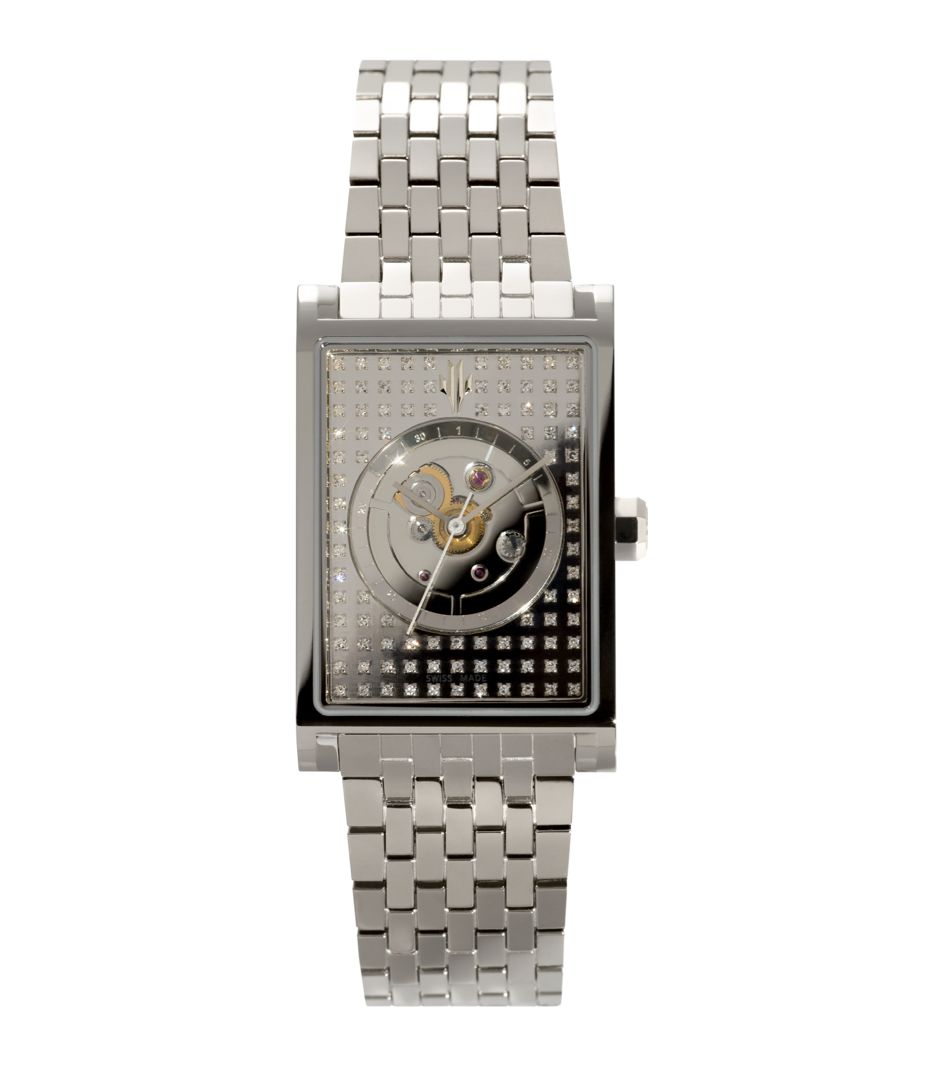
Model: VIEREN Steel Stereo Diamond Watch
Case Size: 27 x 41.5 x 9.2mm
Movement: Self winding ETA-2671 automatic with 25 jewels and 44 hour power reserve
Price: $7,250
Case Size: 27 x 41.5 x 9.2mm
Movement: Self winding ETA-2671 automatic with 25 jewels and 44 hour power reserve
Price: $7,250

Model: VIEREN Steel Stereo Diamond Watch
Case Size: 27 x 41.5 x 9.2mm
Movement: Self winding ETA-2671 automatic with 25 jewels and 44 hour power reserve
Price: $7,250
Case Size: 27 x 41.5 x 9.2mm
Movement: Self winding ETA-2671 automatic with 25 jewels and 44 hour power reserve
Price: $7,250
7. Mechanical vs. Automatic Watch - How To Choose
7. Mechanical vs. Automatic Watch - How To Choose
When choosing between mechanical and automatic watches, understanding their key differences is crucial. Mechanical watches require manual winding, connecting wearers to traditional craftsmanship. Automatic watches, on the other hand, utilize kinetic energy from movement for self-winding, offering convenience without the need for manual winding when worn every day.
Beyond winding methods, both these watch types exude luxury with intricate movements and handcrafted details. Both mechanical and automatic watches blend this craftsmanship with modernity, catering to various lifestyles and occasions. We recommend looking for Certified Swiss Made timepieces, known in the world as the gold standard for quality.
Ultimately, the choice between mechanical and automatic watches comes down to personal taste and lifestyle. Mechanical watches offer a classic, hands-on experience, while automatic watches provide a blend of heritage and innovation. Both cater to different preferences, ensuring there's a perfect timepiece for every wrist.
Beyond winding methods, both these watch types exude luxury with intricate movements and handcrafted details. Both mechanical and automatic watches blend this craftsmanship with modernity, catering to various lifestyles and occasions. We recommend looking for Certified Swiss Made timepieces, known in the world as the gold standard for quality.
Ultimately, the choice between mechanical and automatic watches comes down to personal taste and lifestyle. Mechanical watches offer a classic, hands-on experience, while automatic watches provide a blend of heritage and innovation. Both cater to different preferences, ensuring there's a perfect timepiece for every wrist.
When choosing between mechanical and automatic watches, understanding their key differences is crucial. Mechanical watches require manual winding, connecting wearers to traditional craftsmanship. Automatic watches, on the other hand, utilize kinetic energy from movement for self-winding, offering convenience without the need for manual winding when worn every day.
Beyond winding methods, both these watch types exude luxury with intricate movements and handcrafted details. Both mechanical and automatic watches blend this craftsmanship with modernity, catering to various lifestyles and occasions. We recommend looking for Certified Swiss Made timepieces, known in the world as the gold standard for quality.
Ultimately, the choice between mechanical and automatic watches comes down to personal taste and lifestyle. Mechanical watches offer a classic, hands-on experience, while automatic watches provide a blend of heritage and innovation. Both cater to different preferences, ensuring there's a perfect timepiece for every wrist.
Beyond winding methods, both these watch types exude luxury with intricate movements and handcrafted details. Both mechanical and automatic watches blend this craftsmanship with modernity, catering to various lifestyles and occasions. We recommend looking for Certified Swiss Made timepieces, known in the world as the gold standard for quality.
Ultimately, the choice between mechanical and automatic watches comes down to personal taste and lifestyle. Mechanical watches offer a classic, hands-on experience, while automatic watches provide a blend of heritage and innovation. Both cater to different preferences, ensuring there's a perfect timepiece for every wrist.
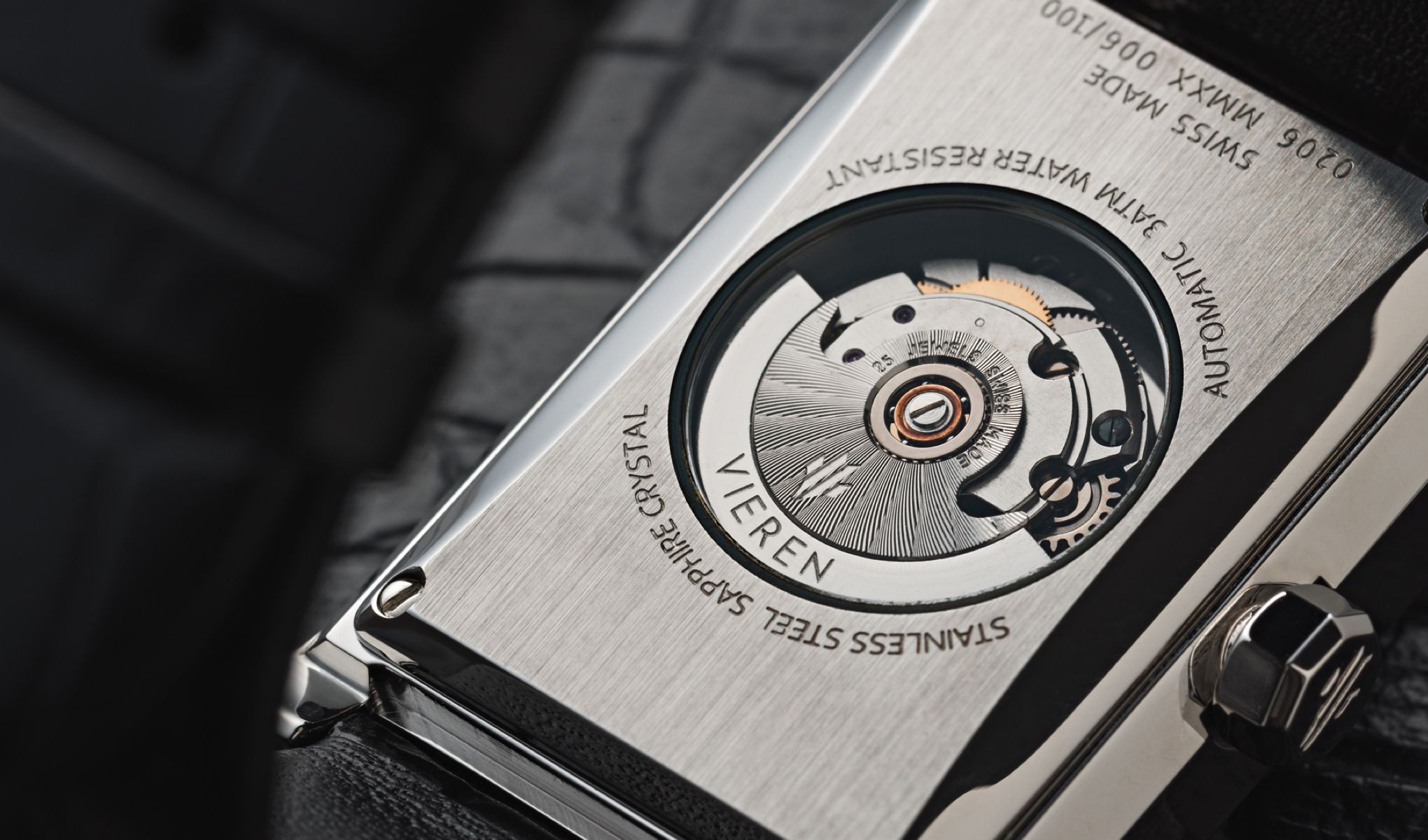

SUMMARY
When choosing a timepiece, deciding between mechanical and automatic timepieces is key. Mechanical watches need daily winding by hand, while automatic watches can self-wind using movement when worn every day. Whether you prefer the classic charm of mechanical watches or the modern convenience of automatic movements, both these watch movements offer luxury, craftsmanship, and versatility. Ultimately, the decision comes down to your unique style and personality, and how you feel when you wear the watch on your wrist.
SUMMARY
When choosing a timepiece, deciding between mechanical and automatic timepieces is key. Mechanical watches need daily winding by hand, while automatic watches can self-wind using movement when worn every day. Whether you prefer the classic charm of mechanical watches or the modern convenience of automatic movements, both these watch movements offer luxury, craftsmanship, and versatility. Ultimately, the decision comes down to your unique style and personality, and how you feel when you wear the watch on your wrist.

ABOUT THE AUTHOR
Jess Chow, Founder and CEO VIEREN
As a next-generation watch entrepreneur, Jess’ passion for horology led her to create VIEREN - the coveted new microbrand handcrafting modernist Swiss Made automatic watches to power your time.

ABOUT THE AUTHOR
Jess Chow, Founder and CEO VIEREN
As a next-generation watch entrepreneur, Jess’ passion for horology led her to create VIEREN - the coveted new microbrand handcrafting modernist Swiss Made automatic watches to power your time.

UNLOCK: THE AUTOMATIC WATCHES GUIDE
Gain exclusive access to our in-depth guide on automatic watches and take your knowledge to the next level.
.
SUGGESTED FOR YOU
SUGGESTED FOR YOU

